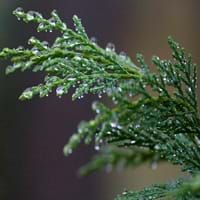Life Span
Perennial
Perennial
Type
Needled or Scaled Evergreen
Perennial
Origin
Hybrid origin
California
Types
not available
Not Available
Habitat
All sorts of environments, Alpine Meadows, High elevation, Hilly upland habitat
Chaparral, River side
USDA Hardiness Zone
6-9
7-10
Sunset Zone
3b, 4, 5, 6, 7, 8, 9, 10, 11, 12, 13, 14, 15, 16, 17, 18, 19, 20, 21, 22, 23, 24
H1, 4, 5, 6, 7, 8, 9, 10, 11, 12, 14, 15, 16, 17, 18, 19, 20, 21, 22, 23, 24
Habit
Pyramidal
Upright/Erect
Minimum Width
Not Available
Flower Color
Non Flowering Plant
White, Yellow
Flower Color Modifier
Bicolor
Bicolor
Fruit Color
Brown
Green, Tan
Leaf Color in Spring
Green, Blue Green, Gray Green
Gray Green
Leaf Color in Summer
Green, Blue Green, Gray Green
Gray Green
Leaf Color in Fall
Green, Blue Green, Gray Green
Gray Green
Leaf Color in Winter
Green, Blue Green, Gray Green
Light Green
Leaf Shape
needle shaped
Lance shaped
Plant Season
Spring, Summer, Fall, Winter
Spring, Summer
Sunlight
Full Sun
Full Sun
Type of Soil
Clay, Loam
Loam, Sand
The pH of Soil
Acidic, Neutral, Alkaline
Neutral, Alkaline
Soil Drainage
Well drained
Well drained
Bloom Time
All year
Early Spring, Spring, Late Spring, Early Summer, Summer
Tolerances
Cold climate, Deer resistant
Drought
Where to Plant?
Ground
Ground
How to Plant?
Hardwood Cuttings, Transplanting
Cuttings, Seedlings
Plant Maintenance
Medium
Medium
Watering Requirements
Average Water Needs
Needs watering once a week, Water well when planted
In Summer
Lots of watering
Lots of watering
In Spring
Moderate
Moderate
In Winter
Average Water
Average Water
Soil pH
Acidic, Neutral, Alkaline
Neutral, Alkaline
Soil Type
Clay, Loam
Loam, Sand
Soil Drainage Capacity
Well drained
Well drained
Sun Exposure
Full Sun
Full Sun
Pruning
Prune for size control, Prune if you want to improve plant shape, pruning needed for strong structure, Remove damaged leaves, Remove dead branches, Remove dead leaves
prune nearly to the ground in late fall
Fertilizers
All-Purpose Liquid Fertilizer, slow-release fertilizers
organic fertlizers
Pests and Diseases
Canker, Root rot, Stigmina needle blight
Verticillium Wilt
Plant Tolerance
Cold climate, Deer resistant
Drought
Flower Petal Number
Single
Single
Showy Foliage
Yes
Not Available
Foliage Texture
Fine
Not Available
Foliage Sheen
Matte
Not Available
Attracts
Birds
Bees, Birds, Butterflies
Allergy
Unknown
no allergic reactions
Aesthetic Uses
Formal Garden, Ornamental use, Showy Purposes, Woodland margins
Showy Purposes
Beauty Benefits
Not Available
Not Available
Environmental Uses
Air purification
Air purification
Medicinal Uses
No Medicinal Use
antimicrobial, Astringent, Gum Problems, Stomach pain
Part of Plant Used
Not Available
Flower Stalk
Other Uses
Acts as a natural source of rain water for birds and insects., deer resistant, Used as Christmas Tree
Used as Ornamental plant
Used As Indoor Plant
No
No
Used As Outdoor Plant
Yes
Yes
Garden Design
Feature Plant, Hedges, Mixed Border, Screening, Wind Break
Feature Plant, Groundcover, Mixed Border, Wildflower
Botanical Name
X CUPRESSOCYPARIS leylandii
ROMNEYA coulteri
Common Name
Leylandii
Matilija Poppy
In Hindi
Leyland cypress
Matilija Poppy
In German
Leyland-Zypresse
Matilija Poppy
In French
Cyprès de Leyland
Matilija Poppy
In Spanish
Cupressus leylandii
Matilija amapola
In Greek
Leyland Cypress
Matilija παπαρούνας
In Portuguese
Cipreste-de-leyland
Matilija Poppy
In Polish
Cyprysowiec Leylanda
Matilija Poppy
In Latin
Leyland Cypress
Matilija Poppy
Phylum
Coniferophyta
Magnoliophyta
Class
Pinopsida
Magnoliopsida
Order
Pinales
Papaverales
Family
Cupressaceae
Papaveraceae
Clade
Not Available
Angiosperms, Eudicots
Tribe
Not Available
Not Available
Subfamily
Not Available
Papaveroideae
Number of Species
Not Available
Importance of Leyland Cypress and Matilija Poppy
Want to have the most appropriate plant for your garden? You might want to know the importance of Leyland Cypress and Matilija Poppy. Basically, these two plants vary in many aspects. Compare Leyland Cypress and Matilija Poppy as they differ in many characteristics such as their life, care, benefits, facts, etc. Every gardener must at least have the slightest clue about the plants he wants to plant in his garden. Compare their benefits, which differ in many ways like facts and uses. The medicinal use of Leyland Cypress is No Medicinal Use whereas of Matilija Poppy is antimicrobial, Astringent, Gum Problems and Stomach pain. Leyland Cypress has beauty benefits as follows: Not Available while Matilija Poppy has beauty benefits as follows: Not Available.
Compare Facts of Leyland Cypress vs Matilija Poppy
How to choose the best garden plant for your garden depending upon its facts? Here garden plant comparison will help you to solve this query. Compare the facts of Leyland Cypress vs Matilija Poppy and know which one to choose. As garden plants have benefits and other uses, allergy is also a major drawback of plants for some people. Allergic reactions of Leyland Cypress are Unknown whereas of Matilija Poppy have no allergic reactions respectively. Having a fruit bearing plant in your garden can be a plus point of your garden. Leyland Cypress has no showy fruits and Matilija Poppy has no showy fruits. Also Leyland Cypress is not flowering and Matilija Poppy is not flowering . You can compare Leyland Cypress and Matilija Poppy facts and facts of other plants too.





